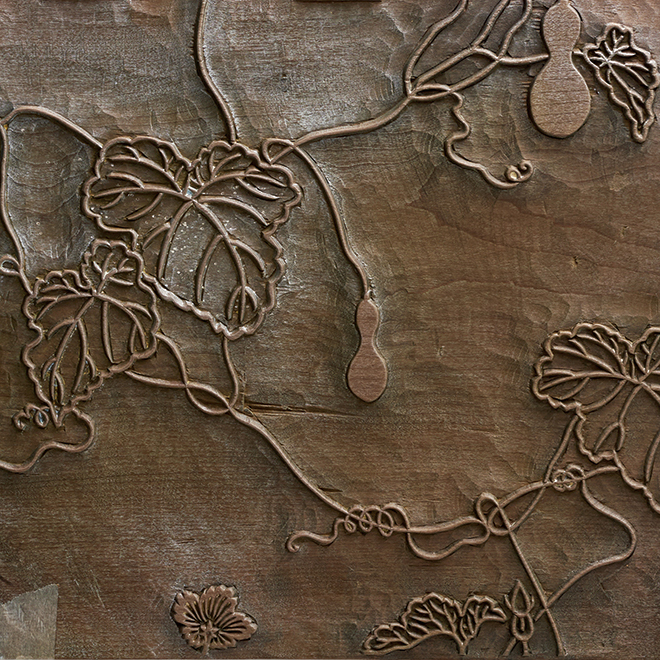|
|
 |
 |
 |
 |
|
 |
The story of Edo Karakami
|
Edo Karakami is a type of decorated paper used in interiors, made by Japanese artisans.
The many variations were created during the Edo period (1603-around1868) in the city of Edo (now Tokyo), when it became the new capital of Japan.
The origin of the decorations dates back to the Heian era (794-around1192) in the city of Kyoto, which was run by court nobles who used these decorated papers for writing poetry.
Edo flourished during the 265 year rule of the Tokugawa family shogunate. Many artisans from Kyoto immigrated to the city and cultivated their techniques there, and it became an important period in the developing artistic culture of Japan.
The population increase made construction a necessity, and many decorative papers were made as interior materials for building. Edo Karakami was used in many important places such as temples, castles, and palaces, as well as in the houses of merchants. The techniques and designs to decorate Fusuma sliding doors were developed at this time. The richness and variety of Edo Karakami is also called Kyoho Sengata, meaning a thousand designs. |
 |
 |
 |
Organic products |
Washi, Japanese paper and natural colourants
Washi / Japanese paper for Edo Karakami was originally developed in Japan, evolving from the antique art of paper production from China.
Washi is traditionally produced using Japanese vegetable fibres such as Gampi, Mitsumata and Kozo. These have a very strong resilience and consistency, and smooth surface. The oldest existing Washi is a handmade paper dating from 770 AD. |
The colourant and materials for the decoration are made from natural minerals, also used in Japanese traditional paintings. One of them is Kira, mica in English, which has a very particular kind of beautiful brightness. Kira reflects in many gentle ways, depending on the light.
◎ Edo Karakami is a trademark registered as a Japanese traditional artisanal product by the government and Tokyo region.
◎ Washi handmade paper will be added to the UNESCO list of intangible cultural heritage in November 2014. |
|
|
|